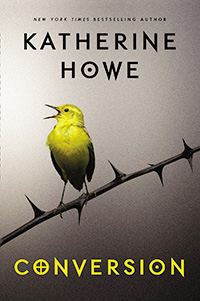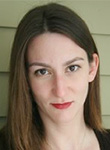Salem, student pressures inspire Howe's 'Conversion'
By Daniel Aloi

In early 2012, a group of students at a high school in Le Roy, New York, suffered from a strange illness with similar involuntary physical symptoms including tics and stuttering. Eventually 18 students (mostly girls) were affected, and media attention – and speculation about causes including “mass hysteria” – ran wild.
“I watched it unfold when it kind of started,” says fiction writer Katherine Howe, an American studies lecturer at Cornell. “There’d been all these hypotheses.”
Howe was at an Ithaca garage awaiting a car repair that spring when a cable news story came on attributing the illnesses in Le Roy to conversion disorder – a diagnosis indicating physical manifestations of psychological stress. At the time, she says, “I was teaching a historical fiction class; we were reading ‘The Crucible,’ among other things. I thought, ‘I can’t believe it – that’s crazy.’
“That really kind of surprised me, so I wanted to talk with my students about it. My undergrads all thought these were totally different situations. The people in the past were all crazy, and these girls were all suffering from something real. I started writing pretty much right after that.”

Howe’s first young adult novel, “Conversion,” published July 1 by G.P. Putnam’s Sons, is a mystery set in a modern-day Massachusetts prep school for girls, with interludes following events leading up to the Salem witch trials over three centuries earlier. Howe writes in first person from two teenagers’ perspectives: Colleen Rowley, a senior at St. Joan’s, and 17th-century witness Ann Putnam Jr.
The news reports from Le Roy got Howe thinking about “a story from the afflicted girls’ point of view,” she says. “Partly because I wanted to make it different from what really happened – I didn’t want to novelize the real story – but also because in teaching I encounter a lot of students who are really high achievers and had to work really hard to get where they are. It’s a trait I’ve encountered a lot in the classroom. I was interested in what it felt like for kids really pushing themselves hard, every year.”
“The media likes to portray millennials as lazy, but that’s not my experience,” Howe says. “They work really hard. I feel that they are actually pretty aware that increasingly we live in a winner-take-all society. They know that the world is going to be difficult. … It seemed a cool opportunity to talk about why adolescent girls are so stressed out today, despite all the progress we’ve made as a culture.”
Howe is the best-selling author of “The House of Velvet and Glass.” Her first novel, “The Physick Book of Deliverance Dane,” also features parallel narratives of the present day and the Salem witch trials. Her publisher notes that three of her ancestors were accused of witchcraft in Salem.
She hosted a National Geographic special in 2012, “Salem: Unmasking the Devil,” and recently edited “The Penguin Book of Witches,” to be published Sept. 30. Next spring, she will be the visiting fiction writer in residence at Lenoir-Rhyne University in North Carolina.
Calling her genre “historical fiction with a slight magical twist,” Howe says she came to writing from her interest in history.
“It’s a way of engaging in historical inquiry with readers in a new and interesting way,” she says. “In ‘Conversion’ I was interested in the fact that most people encounter this through fiction; most of us read ‘The Crucible’ in high school. Some readers didn’t think [Arthur] Miller had changed things in the story. I was looking at the way that fiction overwrote what happened or changed our understanding of it.”
Media Contact
Get Cornell news delivered right to your inbox.
Subscribe